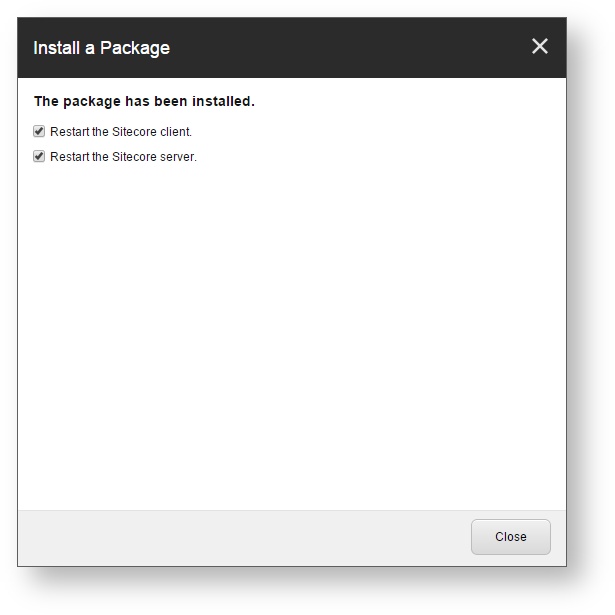December 11, 2020 release (5.0.858.1)
December 11, 2020 release (5.0.858.1)
|
|
Per the Coveo Version Support Lifecycle policy, this Coveo for Sitecore 5 release has been retired. See available Coveo for Sitecore releases. Even if this release is retired, you must still perform some of its upgrade steps to upgrade to a more recent version of Coveo for Sitecore. |
This release includes the 2.9159.8 version of the JavaScript Search Framework (see June 2020 Release (v2.9159)).
When using a CDN with the Coveo Hive framework, this release includes the latest 2.9159 version of the JavaScript Search Framework (see Choosing between local and CDN Coveo JavaScript resource files).
Release Notes
This section summarizes the new features and fixed support cases introduced in the Coveo for Sitecore December 11, 2020 release (5.0.858.1).
|
|
Coveo Hive search interfaces now perform front-end calls through the Coveo REST endpoint proxy to generate search tokens.
Caching |
| Identifier | Enhancement |
|---|---|
| SC-4306 | Added the possibility to create Test organizations directly from Coveo for Sitecore. |
| SC-4592 | Added support for the new virtual hosted-style Push API files endpoint (see Validate Routes And Ports). |
| SC-4608 | Added option to disable the creation of Sitecore sources when activating Coveo for Sitecore. |
| SC-4678 | Added the possibility to select the data residency region when creating a trial organization. |
| Identifier | Case | Fixed Support Case |
|---|---|---|
| SC-4623 | 00063532 | Hid the Sort type option from data sources as it is for Coveo internal usage only. This also fixed the unhandled exception in Content Editor prior to activation issue. |
| SC-4634 | 00062902 | Removed underscore.js reference from Command Center index.html page. |
| SC-4643 | 00063772 | Applied a wait-and-retry strategy on HTTP calls when pushing documents and permissions. |
| SC-4658 | 00063825 | Reduced load on the content database by eliminating fast queries when using Sitecore dictionaries. |
| SC-4671 | 00063947 | Fixed issue with the coveoProcessParsedRestResponse pipeline not being executed. |
| Identifier | Bug Fix |
|---|---|
| SC-4693 | Fixed issue with Sitecore 10.0 CDs throwing an error when Coveo for Sitecore is not yet activated. |
Upgrade Steps
|
|
Per the Coveo Version Support Lifecycle policy, this Coveo for Sitecore 5 release has been retired. See available Coveo for Sitecore releases. Even if this release is retired, you must still perform some of its upgrade steps to upgrade to a more recent version of Coveo for Sitecore. |
This section describes how to upgrade Coveo for Sitecore from October 30, 2020 (5.0.822.2) to December 11, 2020 (5.0.858.1). If you're upgrading over multiple versions, Coveo has a procedure to streamline the process.
| For the best Coveo for Sitecore experience, always follow the Leading Practices When Upgrading Coveo for Sitecore. |
Step 1: Upgrade Coveo for Sitecore
| Make sure the Microsoft MVC security update MS14-059 is installed on every Sitecore host in your environment.. |
- Log into the Sitecore Desktop.
- Access the Installation Wizard (Sitecore Start Menu > Development Tools > Installation Wizard).
- Upload and install the Coveo for Sitecore 5.0.858.1 package built for the specific version of Sitecore you're running.
- When prompted to overwrite files, click Yes to all.
-
When prompted to overwrite items, select Overwrite, then click Apply to all.
NoteYou might be prompted twice with this question. Select the Overwrite option and click Apply to all both times. -
Once the installation is completed, make sure that you restart both the Sitecore client and server.

⚠️Step 2: Update Firewall Exceptions
Firewall exception rules for s3.<REGION>.amazonaws.com are no longer of any use because the endpoint URL has changed to the <BUCKET_NAME>.s3.<REGION>.amazonaws.com format. Update your firewall exceptions accordingly.
|
|
Note
The Command Center Coveo Organization section now displays the list of platform endpoints your Sitecore instance is using.
|
Step 3: Manually Update the Coveo Configuration Files
The Coveo configuration files are located in the App_Config\Include\Coveo folder. When upgrading, you must compare the changes to the .example files from your current Coveo for Sitecore version with the ones in the build you're upgrading to. Then, you can merge these changes into your current configuration files. This method let's you keep your customization intact, while still benefiting from the latest enhancements brought in the product. You can use a merge tool such as WinMerge to accomplish this.
In further detail, here are the modifications that you must perform to the configuration files resulting from the feature changes between the previous and current Coveo for Sitecore releases:
Coveo.SearchProvider.config
The <renderContentEditor> element has been added as the first child of the <pipelines> element.
<renderContentEditor>
<!-- The HideContentEditorFields processor hides sections and fields in the Content Editor. -->
<processor patch:before="*[@type='Sitecore.Shell.Applications.ContentEditor.Pipelines.RenderContentEditor.RenderSkinedContentEditor, Sitecore.Client']" type="Coveo.SearchProvider.Processors.ContentEditor.HideContentEditorFields, Coveo.SearchProviderBase" />
</renderContentEditor>
Apply this change in your configuration.
Step 4: Publish your site
In the Sitecore Content Editor, perform a publish site action. This ensures any changes related to Coveo components in the upgrade are published to the web database.